Football
Chalk Talk: How the Cowboys Could Use Jalen McClesky (Pt. 2)
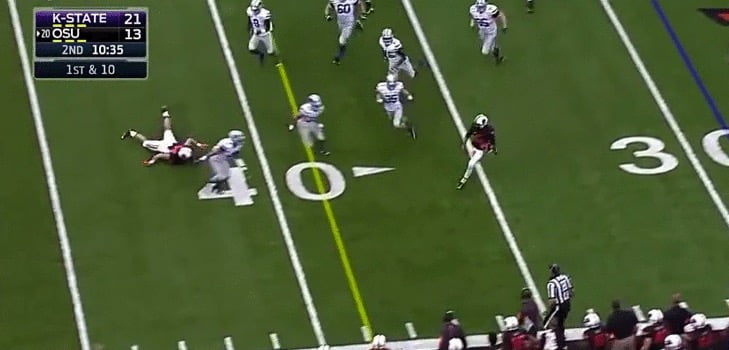
Yesterday, we talked about how Jalen McCleskey’s talent could be utilized through wide receiver screens. Today, we’re going to look at how McCleskey can be used in the misdirection game. There have been hundreds of teams throughout the years that have created special packages and plays for their speedsters — Dexter McCluster, Shane Williams-Rhoads, Brandin Cooks— the list goes on and on. Here are some ways that the Cowboys could do that for McCleskey through trickeration.
McCleskey has already been used in special reverses and end arounds, like the one below.
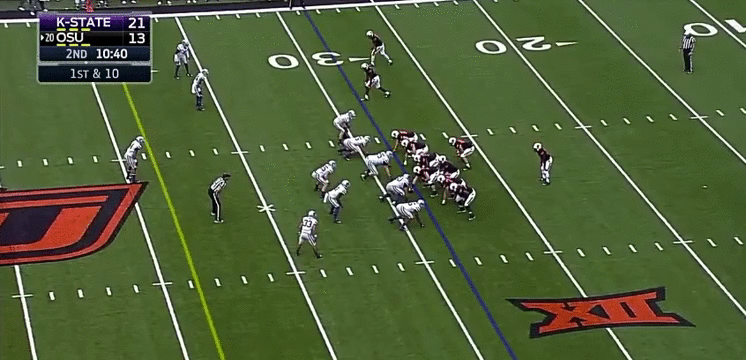
Plays like this both give McCleskey to get big yardage and keep the defense off-balanced. But one play that we will specifically look at today is the jet sweep. The Cowboys have used jet sweep for quite a while now, but the way in which they run it has changed dramatically.
When OSU ran jet sweep last year, they didn’t always have great results. This is because of the blocking scheme that they used alongside it. Oftentimes, the lineman would block the play as if it were an outside zone. The problem is that the defense would follow the flow of the line and easily break through and make the tackle. It happened on multiple occasions, like here with Jeff Carr.
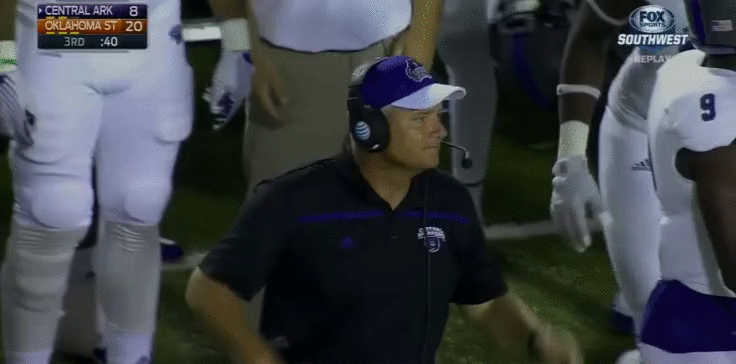
And here with Brandon Shepherd.
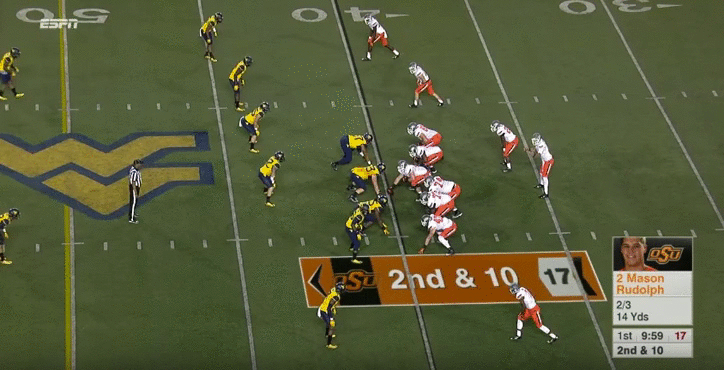
The defense doesn’t have to pay attention to the motion; rather, they let the movement of the offensive line tell them where to go. So how do you solve this? The secret is counterintuitive — don’t block for the jet sweep at all.
Current Montana head coach and spread mastermind Bob Stitt first made the jet flip, or what he calls the speed sweep, famous. Stitt, who used it in his earlier job at Colorado School of Mines, runs his jet sweep with two major differences from the standard.
First of all, instead of a handoff, Stitt uses a touch pass between the quarterback and the receiver. That way, the ball can be exchanged faster, and if the receiver drops it, it’s considered an incomplete pass and not a fumble (because the ball is being ‘passed’ forward). Second, he pairs it with his inside zone schemes and relies only on his receivers to block on the perimeter.
Stitt’s speed sweep was first introduced into the major college football world by Dana Holgorsen, who used it as a big part of his offense at both Houston and OSU before taking the head coaching job at West Virginia. Here’s a still of the Cowboys running the speed sweep in the 2010 Alamo Bowl.
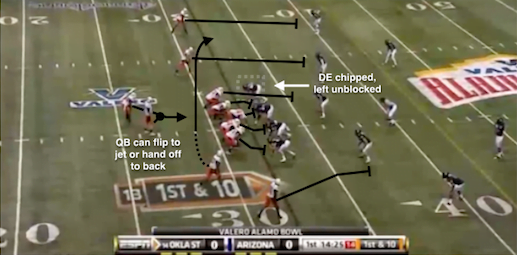
The quarterback has the option to flip it to the jetting receiver or hand the ball off, depending on the defense. The play-side defensive end is often chipped and left unblocked because he rarely makes the play, so it’s almost pointless to block him.
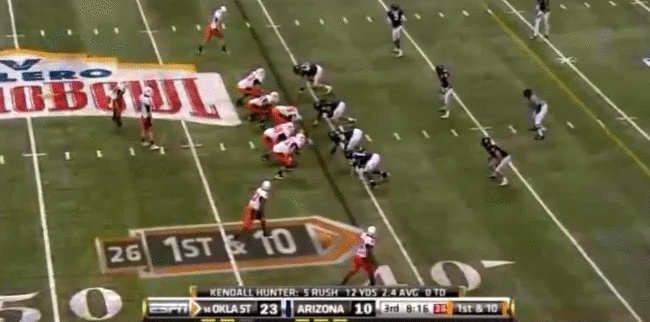
Notice how the linebackers sniff inside run and completely ignore the jet sweep. Defenses are taught to basically ignore the jet motion, as it is often just “window dressing” and is meant to distract. This allows the receiver to get to the outside before the linebackers even know it, giving him a chance to burst into the open field.
This play can be dangerous, especially when a team uses the jet series extensively. West Virginia, which frequently uses the jet motion on their inside run and deep passing concepts, frequently get big plays off the jet sweep because the defense is so used to seeing the motion. This has been a big reason why past WVU speedsters like Tavon Austin and Stedman Bailey had so much success.
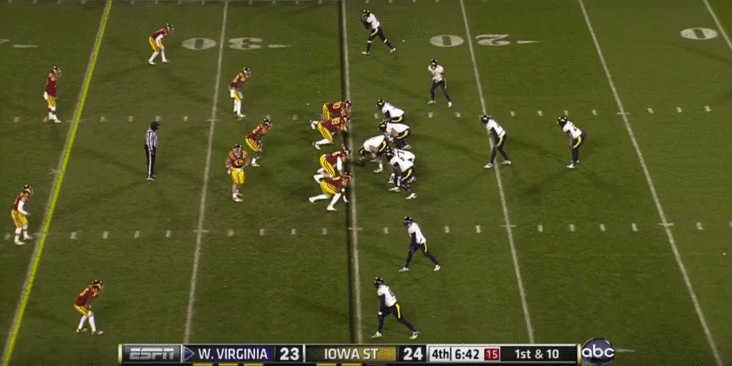
Not only is the jet sweep a good play, but as I just alluded, it sets up for both the inside run and the play action pass. The Cowboys could create a jet series of their own with a speedster, McCleskey, Carr or even Barry J, as the jet man. Athletes like them are best utilized when they’re given a chance in the open field, and the jet sweep is one of the best ways to do it.

-

 Daily Bullets5 days ago
Daily Bullets5 days agoDaily Bullets (Apr. 19): Bedlam Gametime Moved, Cowboy Receivers Breed Confidence
-

 Football4 days ago
Football4 days agoFour-Star Wide Receiver Jaden Perez Commits to Oklahoma State
-

 Wrestling4 days ago
Wrestling4 days agoOSU Wrestling: Olympic Chances End for Cowboy Hopefuls
-

 Football1 day ago
Football1 day agoFour-Star Quarterback Adam Schobel Commits to Oklahoma State, Flips from Baylor






